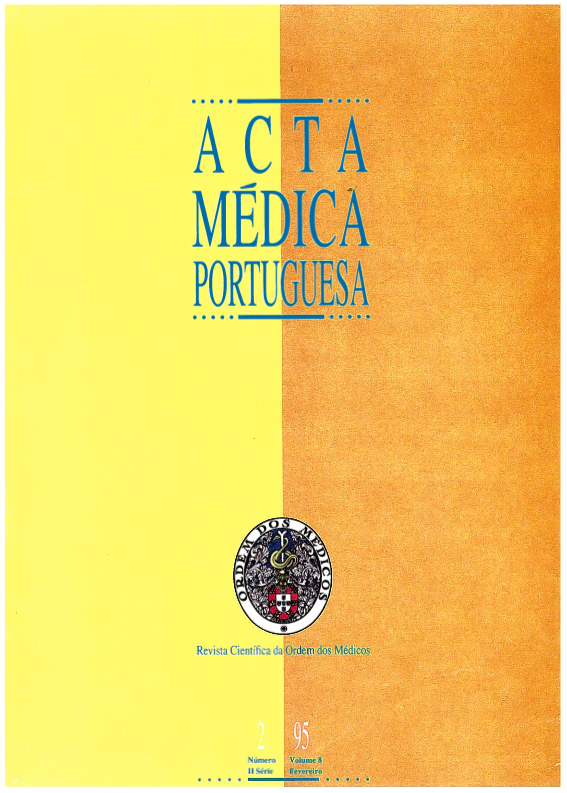Mother-child transmission of immunoglobulins G.
DOI:
https://doi.org/10.20344/amp.2666Abstract
The placental transfer of immunoglobulins is made by active transport and only IgG class of immunoglobulins is transferred. In a full-term gestation IgG concentration is usually higher in the cord serum than in the mother serum. It has been shown that the ratio of cord/maternal IgG is higher when maternal IgG values are low. A series of 44 mother-child pairs from the north of Portugal were studied. Quantitative determination of IgG in all sera was made by single radial immunodiffusion and results were expressed in milligrams/deciliter (mg/dl). In the first 48 hours after delivery, mothers were interviewed and clinical, social and demographic data were collected. In 35 pairs, cord IgG exceeded the corresponding maternal concentration. The ratio of cord/maternal IgG ranged from 0.75 to 2.86 (mean 1.27). From all studied variables only maternal IgG concentration and age were correlated with that ratio. Transplacental concentration (ratio of cord/maternal IgG) was higher for lower levels of maternal IgG. Significant contribution of maternal age did not stand when a woman with extreme values of IgG and age was withdrawn from the analysis. Values found for this series of Portuguese mother-child pairs were similar to those found for other caucasian populations and are in agreement with current proposed models for placental transfer of IgG.Downloads
Downloads
How to Cite
Issue
Section
License
All the articles published in the AMP are open access and comply with the requirements of funding agencies or academic institutions. The AMP is governed by the terms of the Creative Commons ‘Attribution – Non-Commercial Use - (CC-BY-NC)’ license, regarding the use by third parties.
It is the author’s responsibility to obtain approval for the reproduction of figures, tables, etc. from other publications.
Upon acceptance of an article for publication, the authors will be asked to complete the ICMJE “Copyright Liability and Copyright Sharing Statement “(http://www.actamedicaportuguesa.com/info/AMP-NormasPublicacao.pdf) and the “Declaration of Potential Conflicts of Interest” (http:// www.icmje.org/conflicts-of-interest). An e-mail will be sent to the corresponding author to acknowledge receipt of the manuscript.
After publication, the authors are authorised to make their articles available in repositories of their institutions of origin, as long as they always mention where they were published and according to the Creative Commons license.









